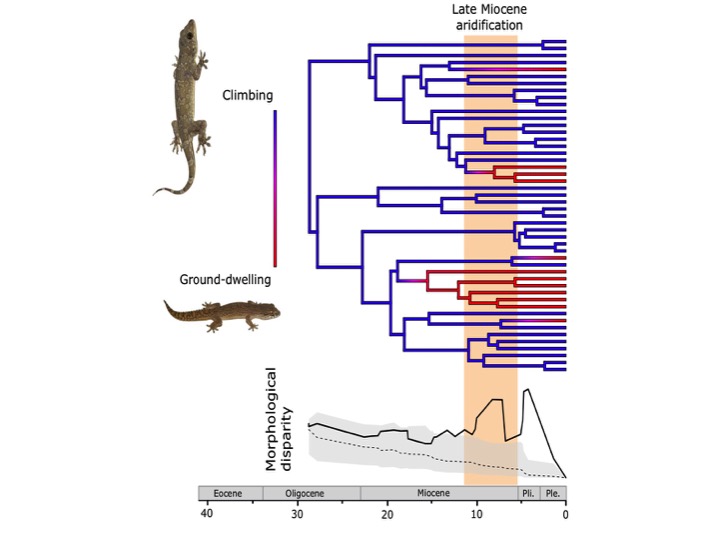New publication: Morphological diversification of geckos from Peninsular India
Mon, 2019-10-14 11:51
Studying adaptive radiations, such as Darwin's finches from the Galápagos Islands, can give us key insights into generalities of ecomorphological diversification. This paper from the Karanth lab examines morphological diversification in Hemidactylus geckos from Peninsular India that occur in a wide range of microhabitats.
Summary: We find that ground-dwelling geckos, largely distributed in open habitat, are morphologically different from species that climb vertical surfaces such as rock-dwelling, arboreal, or human commensal species. We demonstrate that differences in morphology have evolved rather late ~14 million years ago although this group began to diversify 36 million years ago. Moreover, these differences are a result of multiple independent evolution of ground-dwelling lineages, in this group of largely climbing geckos. These ground-dwelling geckos are predominantly distributed in open savanna habitats and their diversification is concurrent with the expansion of these habitats in the Late Miocene in the dry zone of Peninsular India.
Reference: Lajmi, A., Verma, A., & Praveen Karanth, K. (2019). Repeated evolution of terrestrial lineages in a continental lizard radiation. Journal of evolutionary biology.
Link to publication: https://doi.org/10.1111/jeb.13544
